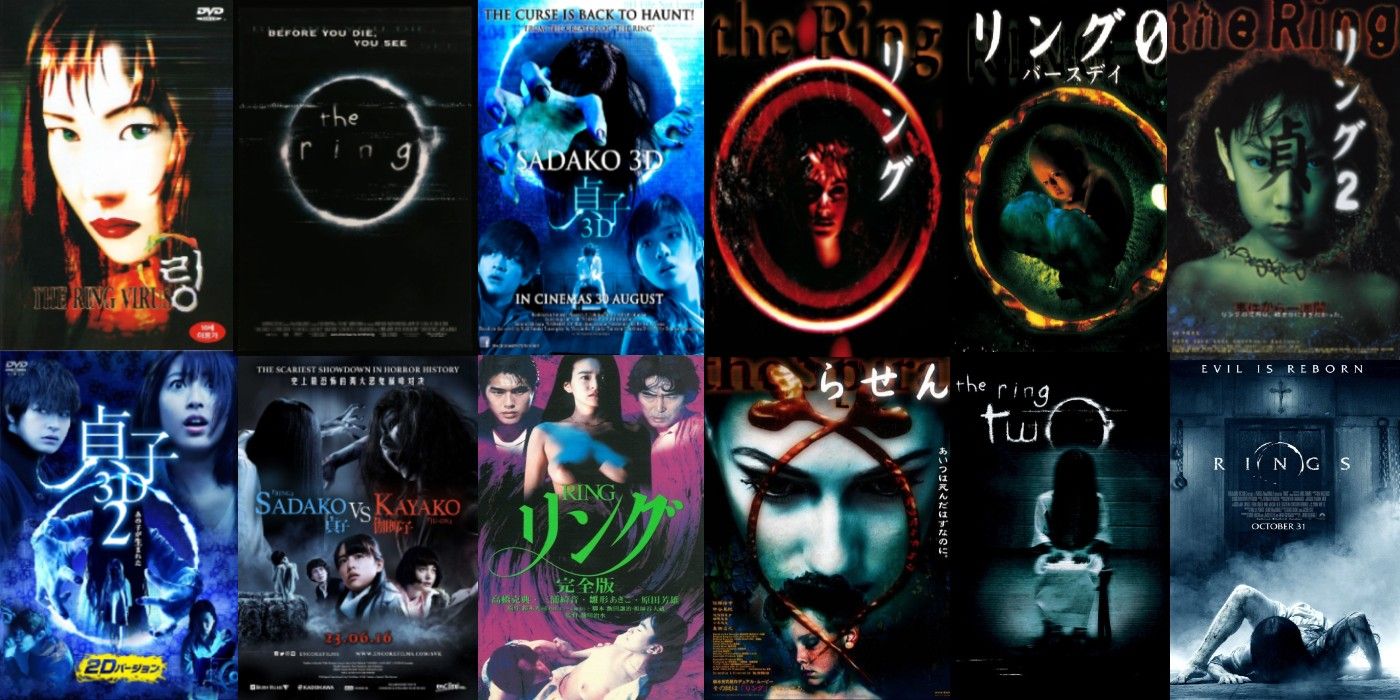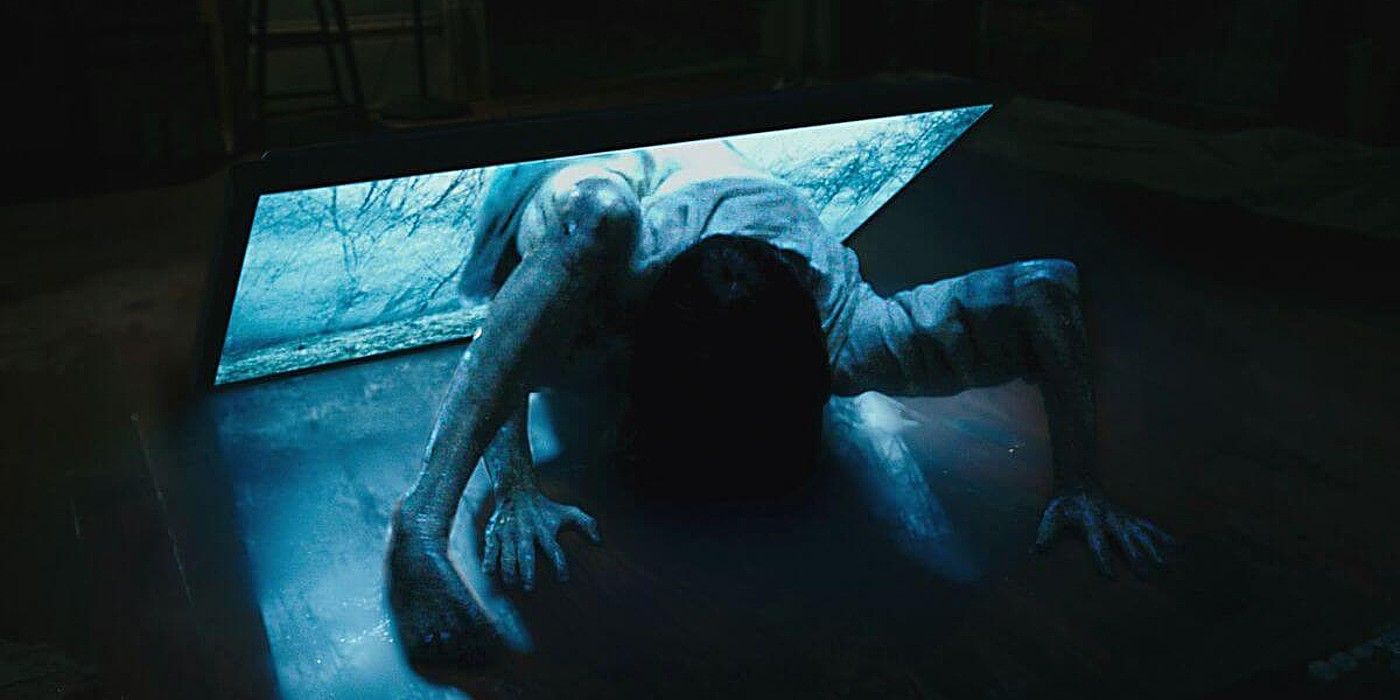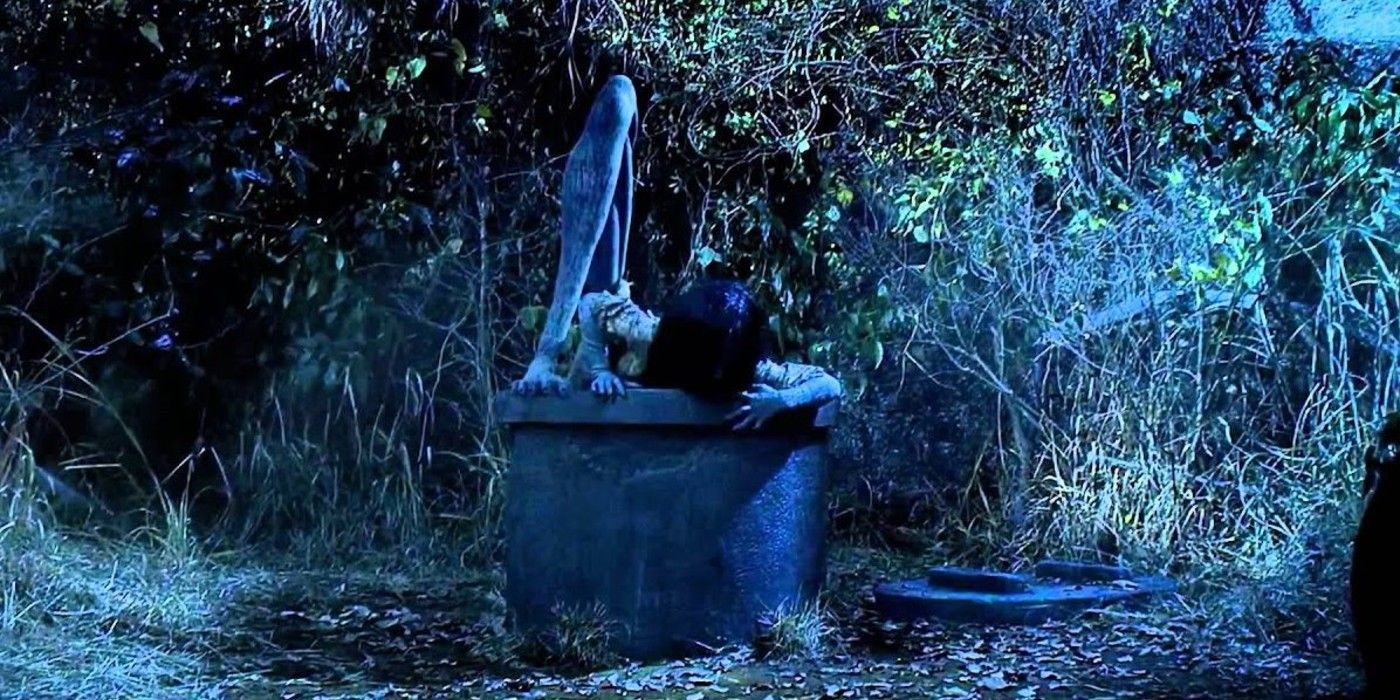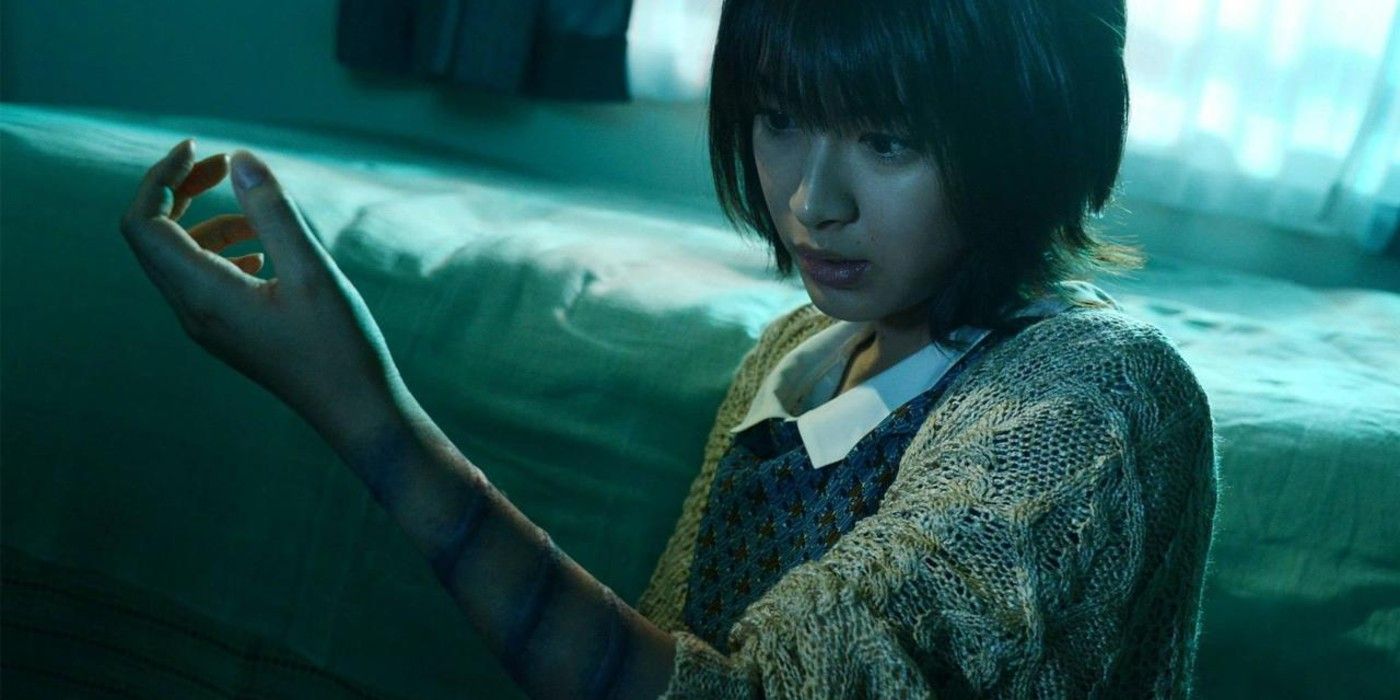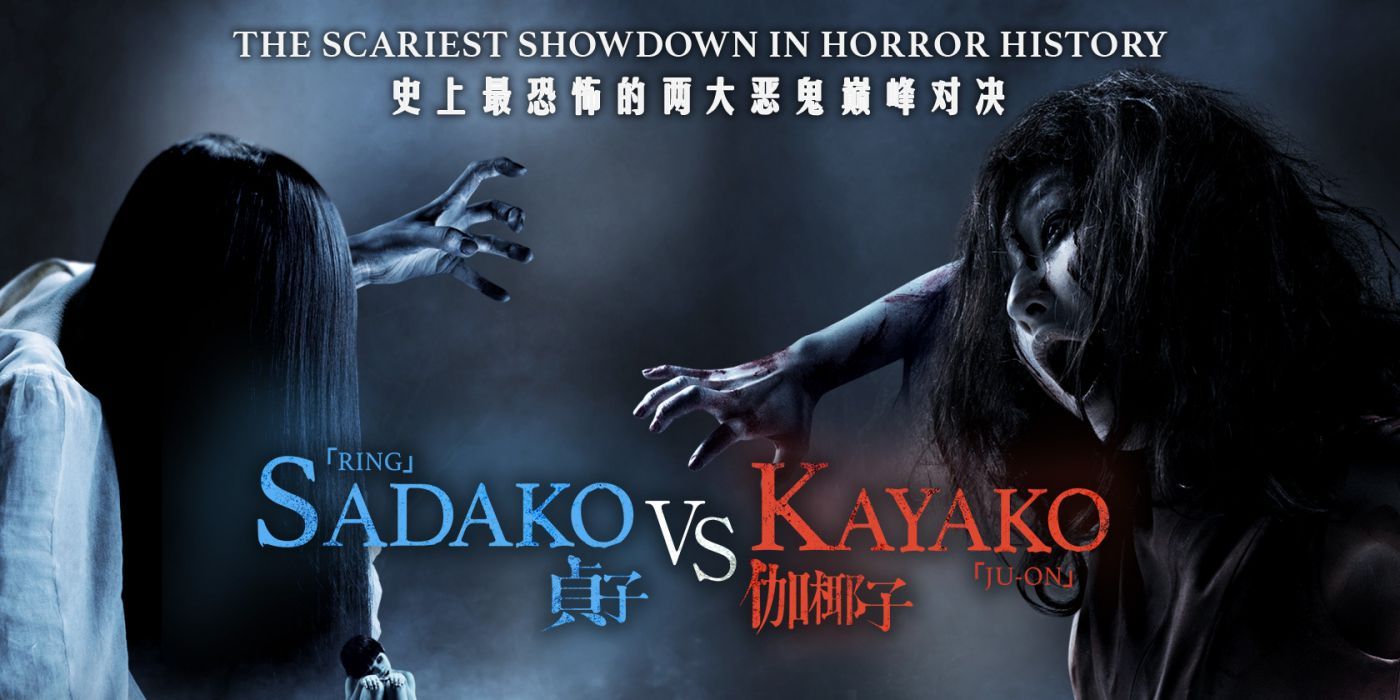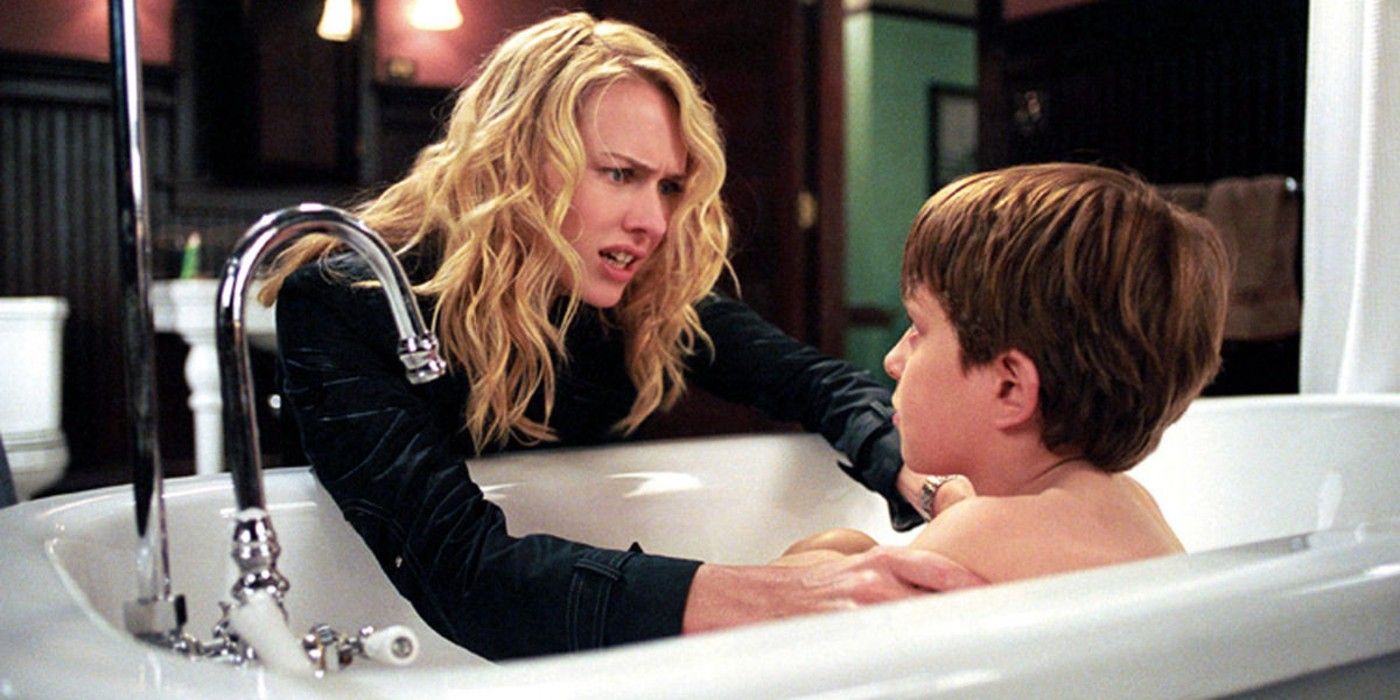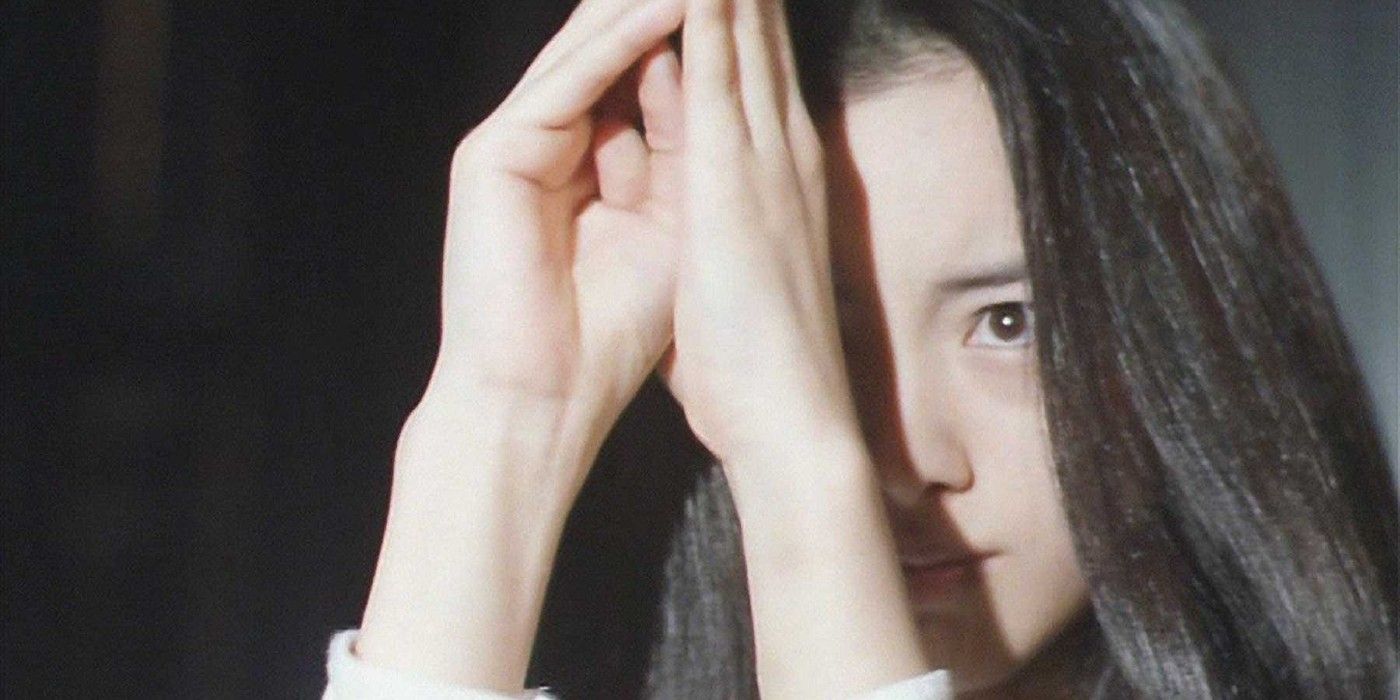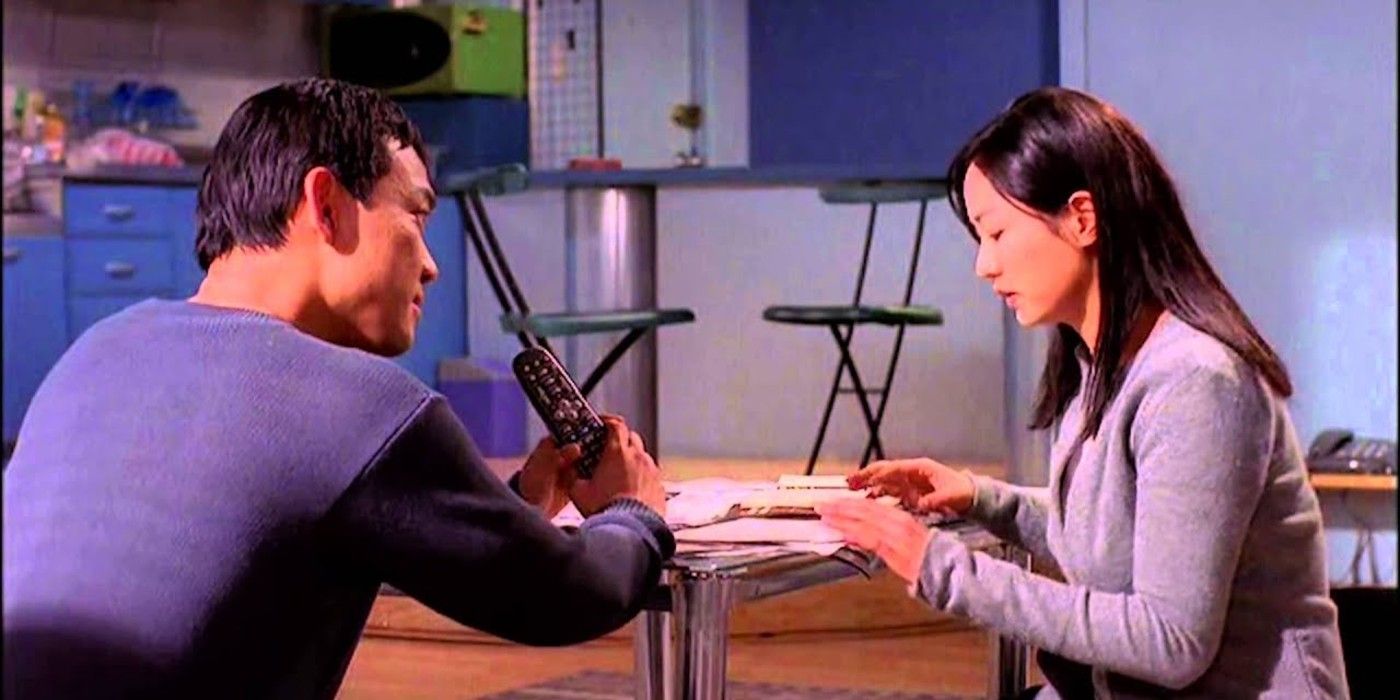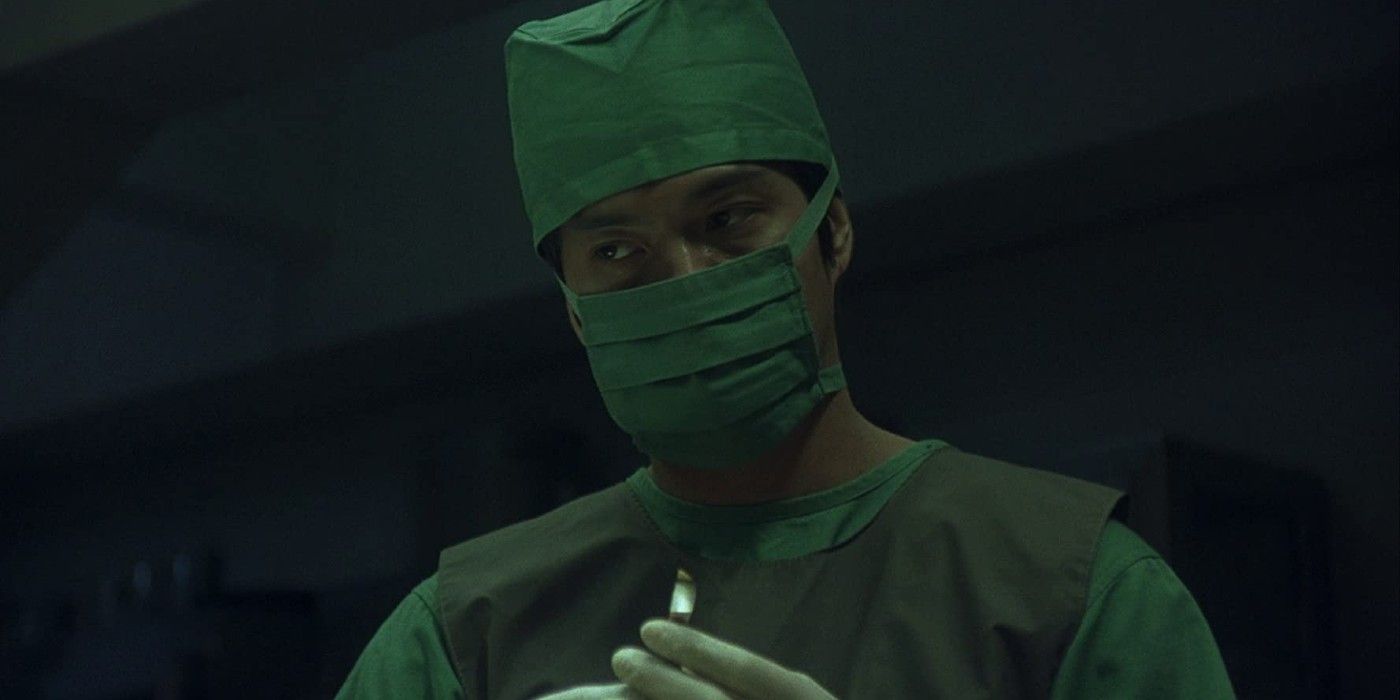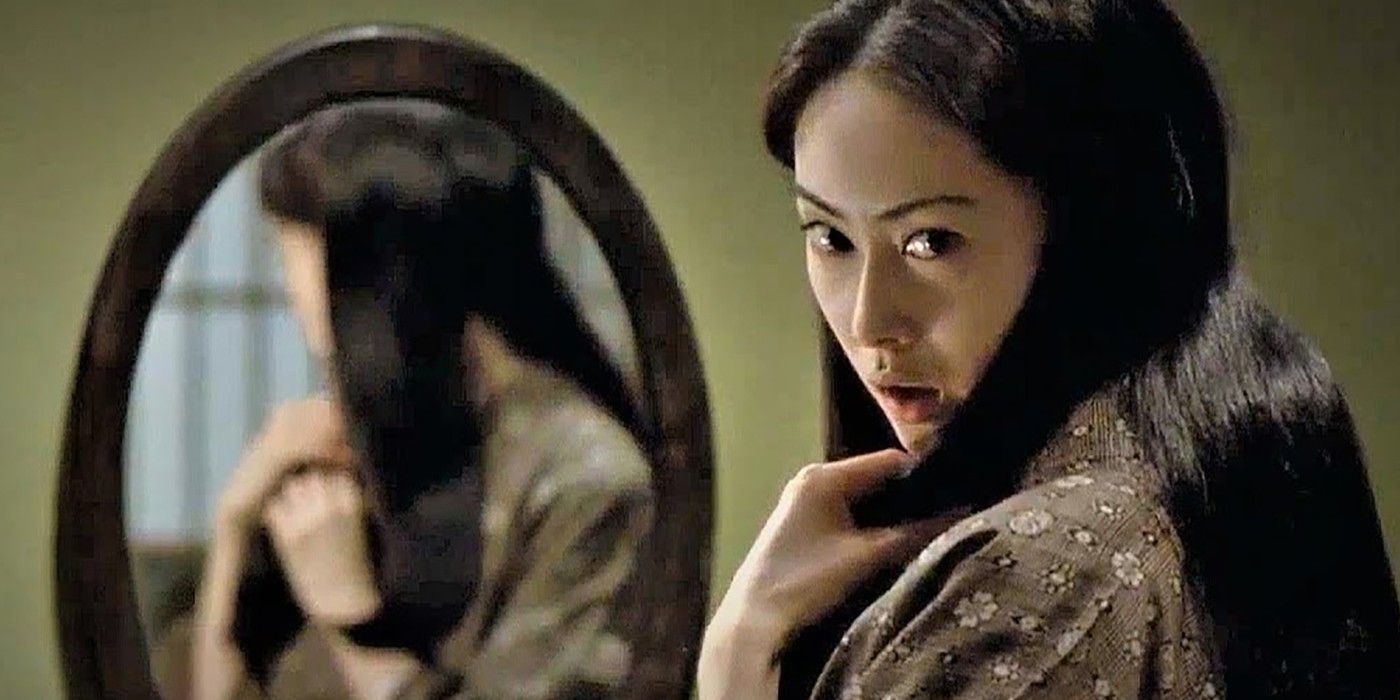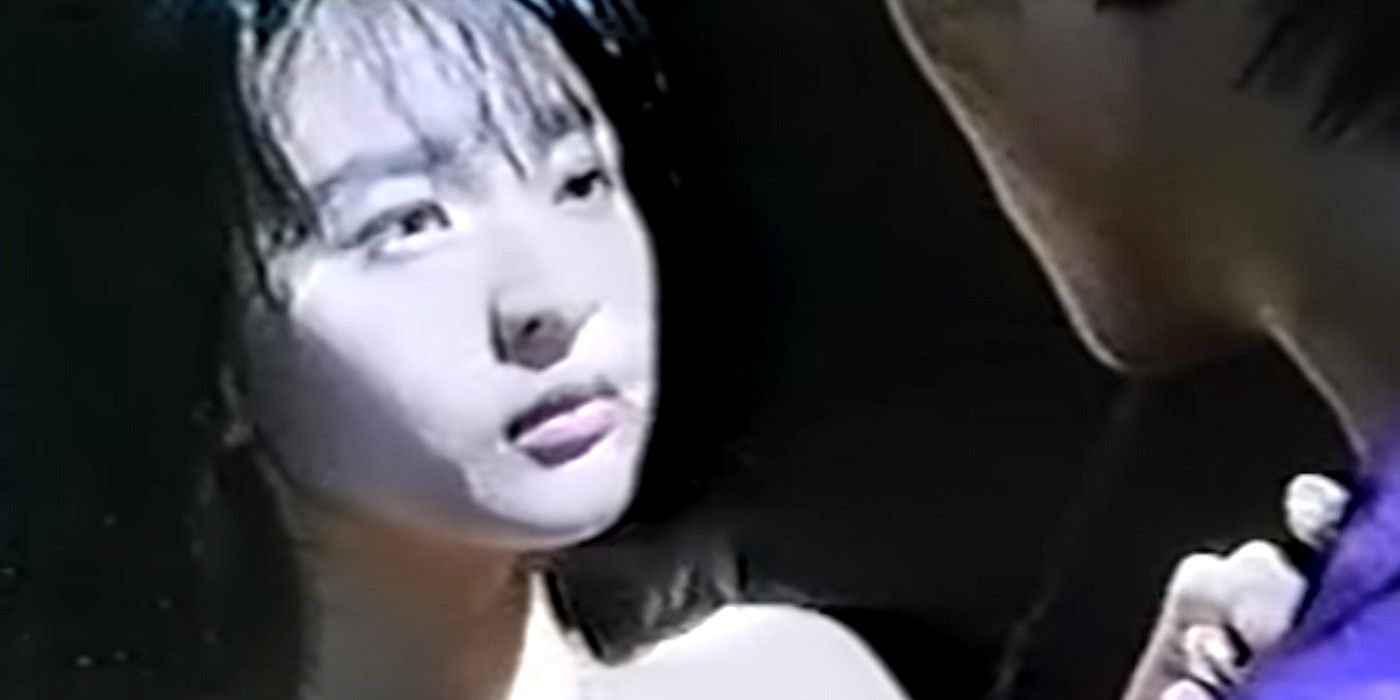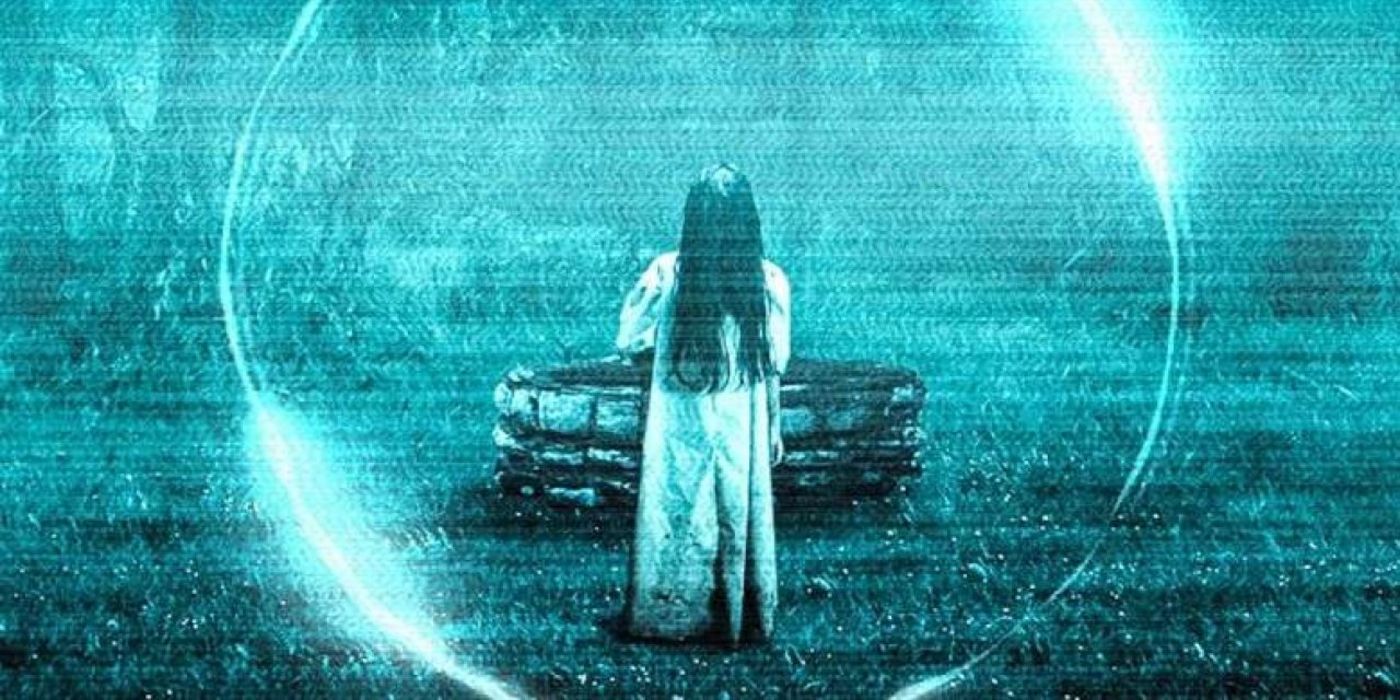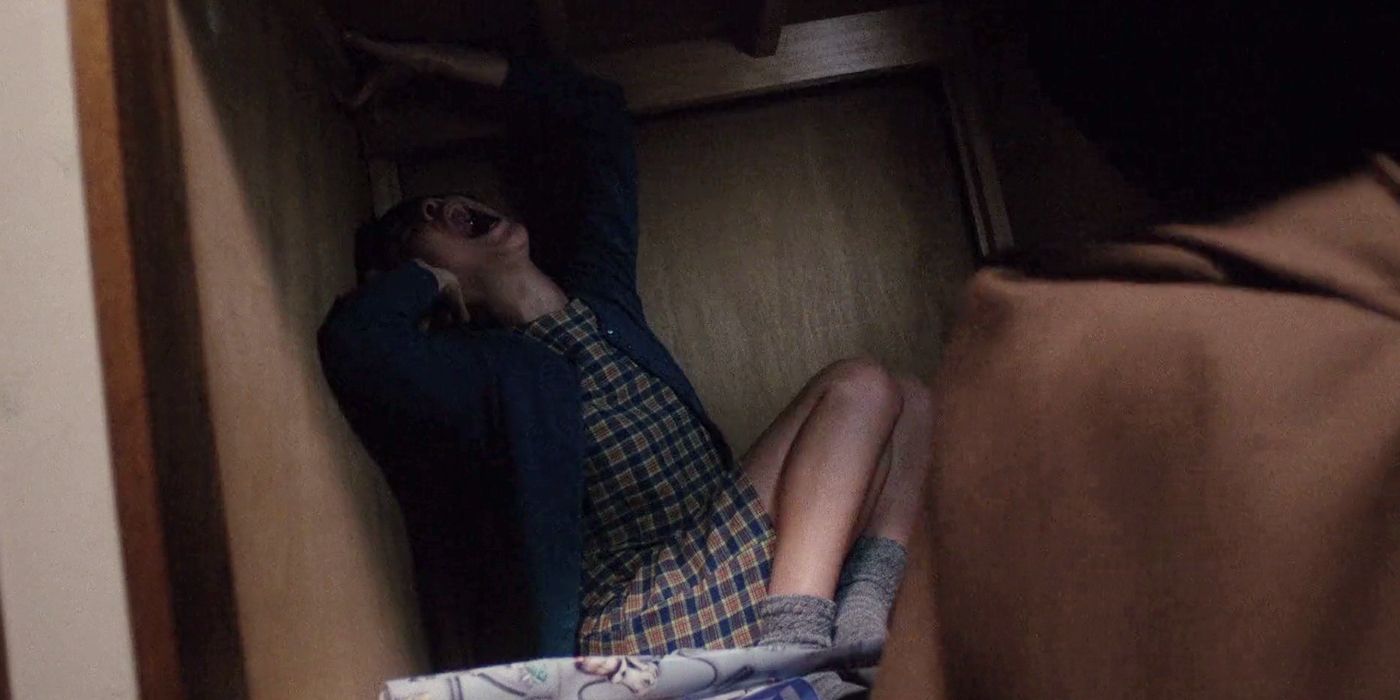Director Hideo Nakata’s 1998 Japanese horror film Ringu was so popular when it released that it launched an entire franchise that includes numerous sequels, prequels, and American remakes. Ringu is widely known for featuring the disturbing VHS tape that places a curse on the viewer which will kill them in just seven days. The early 2000s J-horror craze is largely attributed to the success of Ringu and its successors.
Each of the installments of the franchise are based on Koji Suzuki’s novels. The novel series was first adapted into the 1995 television movie, Ring, by director Chisui Takigawa. It wasn’t until 1998 that Suzuki's story would receive larger recognition. Hideo Nakata is one of Japan’s masters of supernatural horror, with a filmography composed of influential J-horror films including the original Ringu and its sequel, as well as Dark Water (2002). Along with Nakata’s work, western audiences of the early 2000s witnessed the emergence of Takashi Shimizu’s Ju-On (The Grudge) franchise and Takashi Miike’s One Missed Call. Yet none of these have been as iconic or successful as Ringu (The Ring).
While the first American remake retained the original Japanese movie's plot, the further the franchise expanded, the more their differences increased. There are currently twelve films in the Ringu franchise, with various story lines and a potential thirteenth movie in the works. Here is how each of the current Ringu movies compare to each other, ranked from worst to best.
12. Rings (2017)
When Rings released in 2017, it amassed $83.1 million at the box office, a significantly lower take than its predecessors, and failed to provide any semblance of unique and inventive scares to its audience. Rings retold the original story in a mundane way while attempting to appeal to the franchise’s fanbase by building on the mythology of Samara (Sadako in the Japanese franchise). As Rings offers nothing new or exciting to the franchise, the movie ends up being a remarkably disappointing installment.
11. Sadako 3D (2012)
Unsurprisingly, a 3D film addition in the franchise was not the most successful. Sadako 3D is considered a sequel to the original movie’s lost second installment, Rasen, which has an entirely different timeline. It takes on adapting a different novel in Suzuki’s own Ring trilogy, titled S, and follows a young woman who must confront Sadako and Kashiwada. Ultimately, it took on far too many elements in order to capture the horrors established by Rasen.
10. Sadako 3D 2 (2013)
Sadako 3D 2 was slightly more successful than its predecessor in creating an enjoyable supernatural horror experience. It continued the story of its original characters and built upon the Rasen timeline for the final time. Despite its small successes, Sadako 3D 2 largely failed due to its reliance on using 3D effects to make the story scarier than it actually is.
9. Sadako vs. Kayako (2016)
Sadako vs. Kayako is the crossover that American audiences had been waiting for in both The Ring and The Grudge franchises; the horror genre had tried this before with movies like Freddy vs. Jason. The story follows a young girl named Natsumi who watched Sadako’s tape. In order to avoid being killed by the spirit, she pits Kayako of Ju-On (The Grudge) against it. The film is an exciting addition to both franchises, but did not perform well due to the fact that it is a slow-burner that errs toward being more comedic than scary. It plays on the versus aspect of the two horror icons far too much, which results in a rather disappointing plot overall.
8. The Ring Two (2005)
The Ring Two is the official sequel to the original 2002 American remake. It follows the characters six months after the events of the first film, and immediately places Rachel and Aidan back into a horrific situation where Samara attempts to take over the young boy’s body. The sequel’s story line shifts so drastically between various supernatural elements that it makes it difficult to follow. It also abandoned almost every aspect of what made The Ring so enjoyable in favor of increasing the movie's jump-scares and horror tropes.
7. Ring 0: Birthday (2000)
Ring 0: Birthday was the franchise’s attempt at making an origin story for the spirit known as Sadako. It did not totally disappoint, but it heavily relied on pre-existing stories that are based around coming-of-age elements in horror, such as was depicted in Brian De Palma's iconic film, Carrie. Because of this, it isn’t a remarkable addition to the franchise despite the fact that it is a prequel that expands on The Ring mythology.
6. The Ring Virus (1999)
In 1999, the South Korean adaptation of Suzuki’s novel released under the title, The Ring Virus. Despite the fact that it included scenes from the book that Nakata’s 1998 film did not, it is considered to be an almost exact copy of Ringu. It took elements from both of its sources and created an entirely new story line that isn’t as enthralling as either. The Ring Virus falls towards the middle of this list due to the fact that it is a remarkably underwhelming and bland film; it is neither good nor bad.
5. Rasen (1998)
Known as the lost sequel, Rasen released at the same time as Hideo Nakata’s original Ringu. It is the second part of Suzuki’s original story, and was expected to be a great success similar to Ring: Kanzenban. The method of releasing a two-part film series at once did not do it any favors despite its accuracies in retelling the story of Sadako and the videotape. Regardless, Rasen may not be the best sequel, but it can be considered a remarkable first addition in a different timeline with horrors that are unlike any of the other movies in the overall franchise.
4. Ringu 2 (1999)
A year following the release of the original film, Hideo Nakata’s Ringu 2 proved that the budding series was worthy of an expansive franchise. It dominated Japan’s horror releases in 1999, and presented an entirely new story that is not connected to Suzuki’s novels. While it was an exciting addition, it did fall victim to relying on some genre tropes that could have been avoided by better utilizing the source material. Regardless, it is horrifying, thrilling, and continues the story from the original with a fresh perspective.
3. Ring: Kanzenban (1995)
Ring: Kanzenban ranks so high on this list due to its ability to remain as accurate to the original Suzuki novel as possible. It is considered the be the truest to its source. While the made for TV movie has not seen a re-release in nearly 25 years, it is still remarked as one of the best adaptations in comparison to those that followed. Ring: Kanzenban jumpstarted the Ringu/Ring craze that swept through the late 1990s and early 2000s.
2. The Ring (2002)
Gore Verbinski’s American remake of Nakata’s original film was a remarkable success. The Ring brought together elements of the original film such as minimalism and isolation while combining it with westernized themes and backstory for Samara. With outstanding performances by Naomi Watts and David Dorfman alongside an intensely horrific plot, Verbinski’s film set the standard for the upcoming J-horror craze in the US that followed the 2002 release. The Ring is an overall enjoyable film that stands out as an integral piece of horror, cinema, and pop culture history.
1. Ringu (1998)
It is almost unheard of that a remake or reboot can beat the originality of any first movie in a franchise. In the case of The Ring, this is entirely true. Ringu has stood the test of time, and continues to offer a frightening story based on Suzuki’s original work. While it did release alongside its sequel, Rasen, it proved to be the better story of the two, and even prompted the studio behind it to create a new follow-up film.
Hideo Nakata’s Ringu set the tone for the future of supernatural Japanese horror films, especially when it dominated the box office the year it released, and became the most successful movie in the horror genre in 1998. Ringu is one of the most well-known J-horror films in history, and was the primary influence on the international craze as well as being the most successful overall in building a long-running Japanese horror movie franchise.

